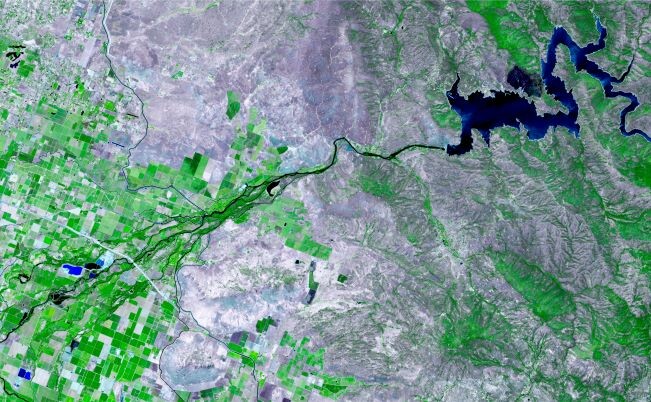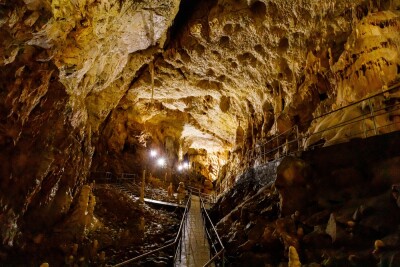Every year, Fast Company puts together a list of what it views as the world’s most innovative companies, poring over every space to find wide representation. Their list includes an overall top 50, as well as individual top ten lists for a long list of individual sectors. These lists range from some of the biggest names in business like McDonalds and Microsoft, down to small startups which have yet to really breakthrough in mainstream conversation. This year’s list, unsurprisingly given how important our industries are to the business world at large, includes a number of companies who fall within the intersection of the geospatial and built worlds. Below are nine companies which land in this categorization, none of which made the overall top 50 but all were within top tens in a variety of different groupings put together by Fast Company.
Unity, 1st in Augmented and Virtual Reality
Just before the start of 2023, Geo Week News put together our list of trends we were watching for across our industries for the coming year, one of which was the continued leveraging of gaming engines for better 3D visualizations. With that in mind, it’s no surprise that Unity is not only on this list of innovative companies, but at the very top in the AR/VR category. Fast Company highlights Unity’s work with digital twins, pointing out how fruitful these tools can be for large spaces like airports. As the industrial metaverse becomes something closer to reality, companies like Unity will be at the forefront of providing the most valuable visualizations for enterprise customers.
GHGSat, 2nd in North America
Fast Company didn’t only break out companies by sector, but also had a handful of lists looking at specific parts of the world and companies standing out in those locations. For North America, GHGSat, based in Montreal, was second only to Ramp, a financial company. GHGSat is, as the name suggests, a satellite company whose hardware is used for Earth observation. Specifically, the company monitors greenhouse gas emissions, particularly methane, coming from industrial sites. The company made headlines last fall, capturing the first high-resolution images of the Nord Stream 3 pipeline leak, and they won a contract with NASA last October.
Luminar, 3rd in Transportation
Although we know there are a plethora of use cases for lidar technology, in the general public the tools are still largely associated with the emerging autonomous vehicle market. Most manufacturers are leaning on lidar for navigation purposes, and Luminar is putting themselves near or at the top of the list of lidar providers. The company had a big 2022, including deals to include its technology in upcoming releases from Polestar and Volvo.

Capella Space, 3rd in Space
Earth observation is a quickly growing space thanks to both the development of the hardware becoming cheaper and less complex as well as increasing standards and regulations around sustainability which can be easily addressed with this technology, and this is the space’s second mention on our list. This time it’s Capella Space, who uses synthetic-aperture radar (SAR) technology for their Earth observation. The company made waves last year with the introduction of their change detection tool to compare captures of the same area, and later this year they plan on launching their next-generation satellite.
Seoul Robotics, 4th in Robotics
While lidar is certainly being used within autonomous vehicles, as discussed above with Luminar, another growing space is using lidar and other sensors within infrastructure and cities to “assist” these vehicles. Seoul Robotics is one of the companies looking to become a leader in this space, with partnerships already developed in places like Chattanooga to showcase their LVL 5 CTRL TWR. They’ve also worked with vehicle manufacturers, and have installed their Wrong-Way Driving Detection System in the United States as well.
Siemens, 4th in Manufacturing
As we alluded to at the top, one of the themes of this list from Fast Company is the diversity of company size, made more evident by Seoul Robotics, a startup, being followed on our list by a large company in Siemens. The company has been around for nearly two centuries at this point and wears many different hats, but they are on this particular list for their stake in the industrial metaverse. Specifically, Fast Company points to Siemens’ Xcelerator platform, allowing businesses to create their own industrial digital twins based on which they can make key decisions. Per their writeup on this list, Siemens has 64 partners who have been on boarded onto the platform, a number which is likely to increase as more large facilities and manufacturers become more comfortable with this type of digitalization.

Niantic, 6th in Augmented and Virtual Reality
Niantic really burst onto the scene back in 2016 with the release of their Pokemon Go game, which became an overnight viral sensation around the world. Utilizing AR technology on a users’ smartphone, the game allowed players to “catch” Pokemon in the real world against real backdrops. Fast-forward to last year, and the company formally launched its “Lightship Virtual Positioning System,” which allows other AR developers to place 3D visualizations within a real-world environment. The virtual map is still growing after its initial focus on places like San Francisco, London, Tokyo, and other major cities, but by the end of 2022 there were more than 140,000 VPS-activated public locations in 125 cities globally. This kind of tool will be huge for the development of other location-based AR games.
Pixxel, 8th in Space
Here, we have our third Earth observation company on the list, this one with the India-based Pixxel. The company launched their first satellites last year with their hyperspectral hardware. These satellites can capture images in more than 150 bands of color at a resolution of 10 meters per pixel, exceeding hyperspectral satellites launched by NASA, the European Space Agency, and the Indian Space Research Organisation, per Fast Company. Customers in spaces like agriculture, energy, and climate-focused organizations have benefited from Pixxel’s real-time data in particular.
NVIDIA, 9th in Artificial Intelligence
Given where the technology world in general is right now with regards to artificial intelligence, being anywhere within the top 10 of this particular category is very impressive. NVIDIA has their hands all over the 3D visualization space with their Omniverse tool, and they opened eyes last year with their Instant NeRF software. This tool significantly simplifies photogrammetry, leaning on AI to “fill in the blanks” and create models using only a handful of photographs. Creating these models is key for creating immersive and realistic 3D models that will be the basis of any theoretical metaverse, and this NeRF tool lowers the barrier to entry by a wide margin, and NVIDIA has even made the tool free for non-commercial purposes.






